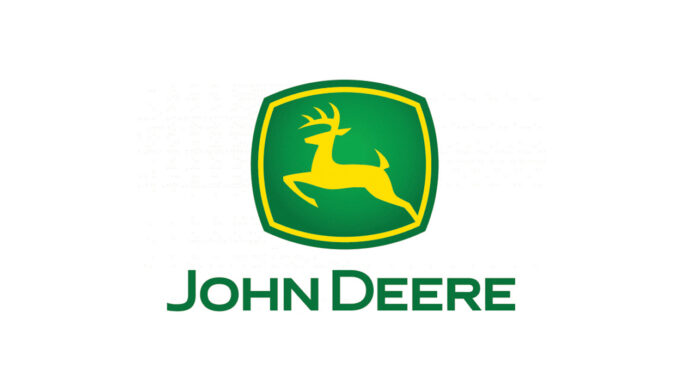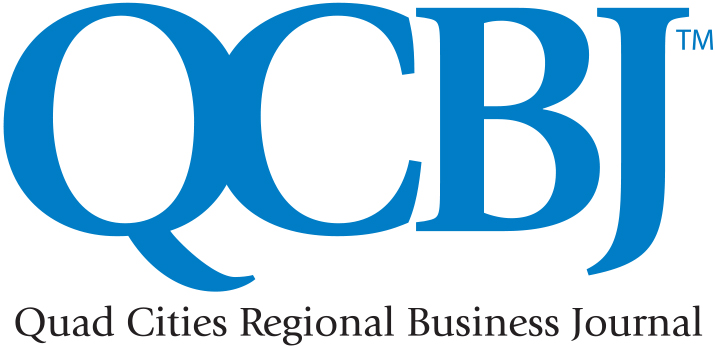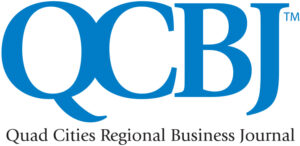
Deere & Co. stock dipped Thursday after the release of first-quarter earnings that put its net income at $869 million for the quarter ending Jan. 25, 2025, compared to $1.75 billion in net income for the same quarter in the previous fiscal year.
The Moline-based global equipment maker’s Q1 report filed Thursday, Feb. 13, Q1 also reported earnings per share of $3.19 compared to $6.23 for the quarter, ended Jan. 28, 2024.
That number, however, still topped analyst estimates of $3.12 per share. As did Deere’s worldwide net sales and revenues, which fell 30% to $8.508 billion in the first quarter, but still beat the $7.7 billion Wall Street had predicted.
Those first quarter declines come after a full year of falling net income and earnings per share for Deere. Despite that the company surpassed the street’s quarterly estimates throughout fiscal 2024 and saw stocks increase. However, today John Deere’s stock, which closed at $476.56 on Wednesday, Feb. 12, stood at $468.59 at noon today on the New York Stock Exchange.
The decline came after the release of Deere’s earnings report that also anticipates market challenges and declines will continue.
Deere’s report also warned that its forecast does not “reflect the impacts of potential import tariffs by the U.S. and retaliatory actions.”
For example, the threat of potential steep tariffs on Deere & Co. made last fall by then-presidential candidate Donald Trump amid that company’s announced layoffs of thousands of workers at its major production facilities.
Nor does it include the impact on farmers of the potential loss of $2 billion in U.S. commodity purchases that provide the U.S. Agency for International Development with humanitarian food aid after President Trump recently froze aid to that organization.
Market drives declines
In the past, economic analysts have said the steep drop in demand for new agricultural equipment has been driven by lingering high interest rates and declining market prices that lower farmers’ profit margins and impact their ability to make capital purchases.
“Deere’s performance in the first quarter highlights our continued focus on optimizing inventory levels of both new and used equipment amidst the uncertain market conditions our customers are facing,” Deere & Co. Chairman and CEO John C. May said in today’s Q1 earnings release. “We’re seeing compelling evidence that our efforts are positioning the company to successfully navigate the current environment.”
Those challenges, in turn, have impacted the agricultural equipment manufacturing sector.
In the release, the company highlighted the fact that the full-year net income forecast remains steady despite currency fluctuations.
In addition, it said, the Q1 results also reflect progress in streamlining field inventory amidst uncertain market conditions, and Deere continues to deliver value as customers navigate a challenging environment.
For example, worldwide net sales and revenues decreased 30% to $8.5 billion in the quarter from $12.1 billion a year ago. Net sales were $6.809 billion for the quarter, compared with nearly $10.49 billion in 2024.
Looking ahead, Deere said net income is expected to remain in the $5 billion to $5.5 billion range. “The stability of our net income guidance not only reflects our resilience in a challenging market but also enables our sustained strategic investments to provide better outcomes for our customers,” Mr. May added.
Results by division
Also according to the Q1 report, each of Deere’s equipment divisions posted decreases in sales over the same quarter last year. Results included:
- Production & Precision Agriculture – Sales fell 37% to $3 billion, operating profit fell 68% from $1 billion to $338 million and the operating margin declined from 21.6% to 11%.
- Small Agriculture & Turf – Net sales fell 28% to $1.74 billion. Operating profit dropped 62% to $124 million and operating margin declined from 13.4% to 7.15%.
- Construction & Forestry – Net sales declined from $3.2 billion to just under $2 billion. Operating profit declined 89% from $566 million to $65 million and operating margin dropped from 17.6% to 3.3%.




